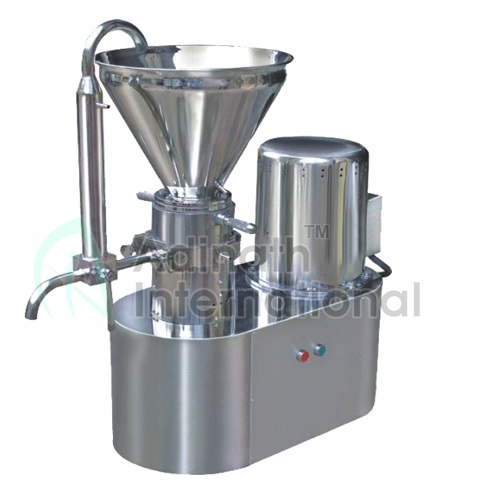In the pharmaceutical sector, a colloid mill is typically used to reduce the particle size of an insoluble material in suspension, whether in liquid or in an emulsion. It is known as emulsification. The rotary-stator principle is how colloid milling machines operate. A spinning wheel revolves rapidly against a fixed frame. The suspended particles must descend from the top to the bottom, passing through a filter before emerging from the system as a suspension of water.
Colloid particles are microscopic liquid droplets that are drawn to the rotor’s spinning movement. This draws even more droplets, and this process continues until the suspension as a whole turns into a colloid. It is helpful for emulsifying materials that are too large in volume to dissolve in a solvent solution, such as water, fat, and other liquids. Such substances can be more thoroughly emulsified by using colloid mill mixers. Colloid mixtures can also be used to separate oily fish oil, which is unsuitable for animal feed, from solids such as dried fish oil that are not soluble in a solvent.
Colloid mill mixers are typically relatively basic machines made out of a rotor and a stator. A stator, which is often constructed of steel or another metal, has two wells in the middle between which the rotor rotates. Small rings are used to seal off the well, the two stators, and the two. The liquid that needs to be mixed travels through the stator and is gathered by a pump-connected collection reservoir. The pump can be installed as a separate device on a special vessel and is frequently driven by a gas or oil reservoir.

There are several different types of colloid mill mixers. Colloid milling mixes come in a wide variety of compositions and can be used for a variety of products, including pharmaceuticals, cosmetics, oils, grease, lubricants, emulsions, and suspensions. Additionally, there are specialised mixtures that can be used for the filtration and cleaning of oils and industrial equipment as well as the mixing and suspension of organic materials, such as when glycerol is being made.
Wet colloid mills, also referred to as colloid mill mixers, can be single-stage machines. One drop of a liquid can be quickly mixed in these devices, and bigger particulates can be removed directly. A concentrate mill is a typical design of wet colloid mill. In order for this type of unit to work, a low concentration of liquid suspension must first pass through the stator, following which any remaining solids must be filtered out. Concentrate Mills can filter out solids using an electrodialysis system or a magnetic field, which removes very high concentrations of suspended materials.


